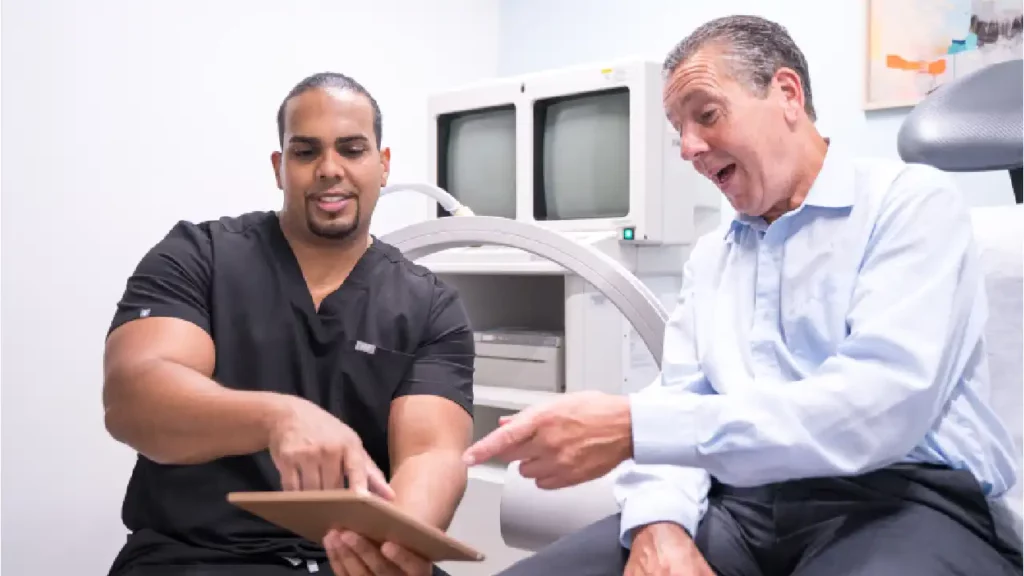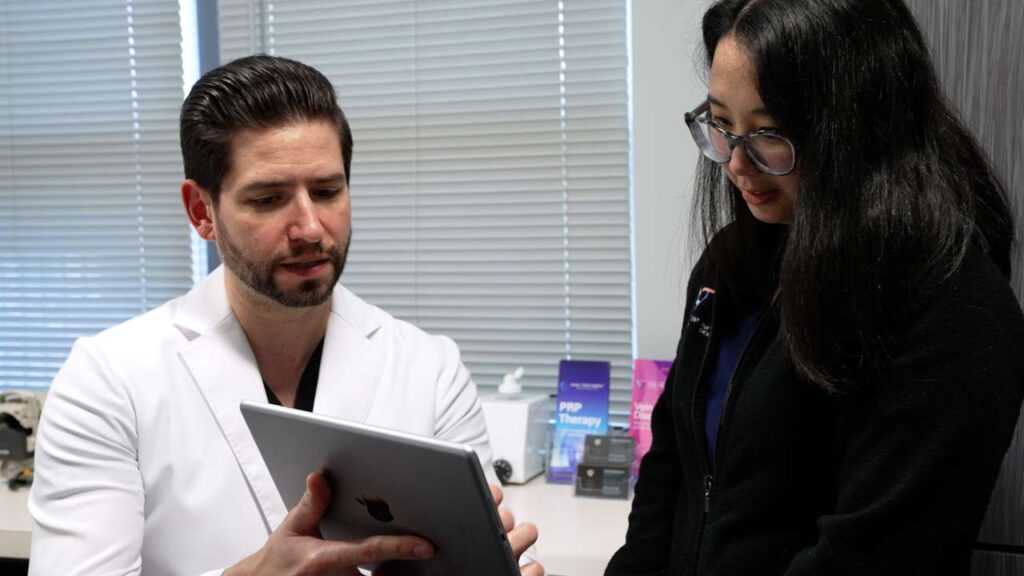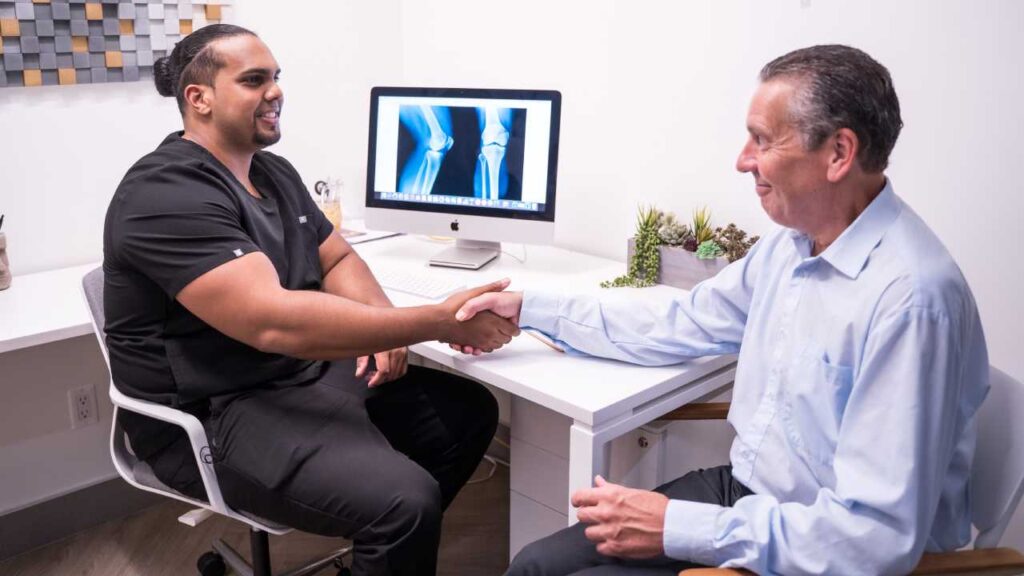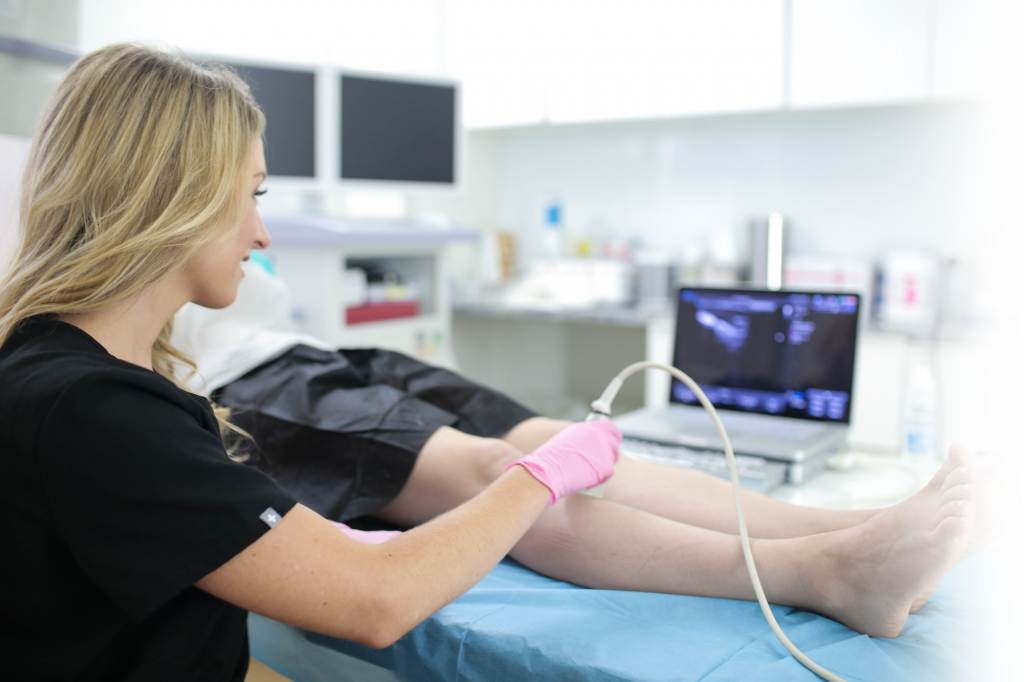Are Bulging Lines on Legs Dangerous?
Veins are the vessels in your vascular system that pump blood to your heart. It’s an important job, so it’s common to feel worried when veins look abnormal. Varicose veins aren’t always dangerous, but sometimes they are. It’s not something you can tell by looking at them, because the problem often starts in deeper veins. The only way to know if your varicose veins are dangerous is to book an appointment with a vein doctor for an assessment.
Varicose veins can cause ulcerations that become infected, blood clots, profuse bleeding, and, in rare cases, a deep vein thrombosis (DVT) that causes a pulmonary embolism. Most patients will experience milder symptoms of varicose veins like swelling, restlessness, cramping, heaviness, and itching. But even these can become debilitating. Visit our Harvard-trained vein specialists to eliminate symptoms, risks, and bulging veins.
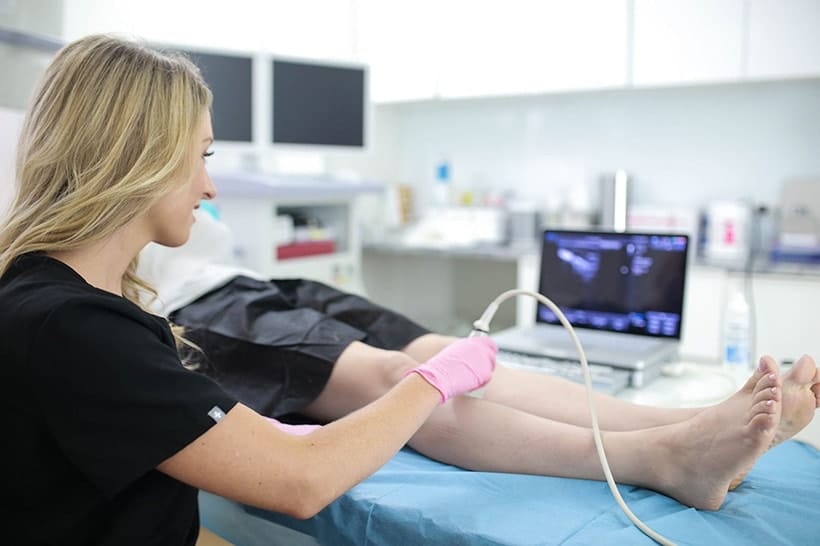
How Can You Tell When a Line on Leg Is Varicose?
Varicose veins are larger, more twisted, and more protuberant than healthy veins. They look more colorful because they’re pressed close to the surface of the skin. The underlying issue is often excess pressure in the veins, which you’ll read more about below. That pressure can cause veins to swell and contort, which produces varicose veins.
Pressure can also cause new branches of veins to spread out from the swollen vein, and these are spider veins. To tell the difference, it helps to know that spider veins are smaller, non-protuberant, and often found in clusters. Varicose veins are larger, bulging veins, and while there can be more than one varicose vein, they aren’t clustered.
Can a Leg Vein Diagram Identify Dangerous Varicose Veins?
The best way to answer the question, “Are varicose veins dangerous,” is to have a leg vein diagram done. This is called vein mapping, and it involves ultrasound imaging. The vein doctor bounces sound waves off your veins, and the veins produce a resulting sound. That sound tells the doctor whether the vein is blocked, engorged, or pumping blood efficiently. These sounds are translated to images on a screen, creating a diagram of veins in the legs. This helps doctors know whether varicose vein treatment is mandatory or optional, and how to prevent complications.
What Else Can a Diagram of Veins in Legs Reveal?
A diagram of veins in the legs can also reveal things like blood clots, broken valves, and vein diseases like Chronic Venous Insufficiency (CVI). This disease is responsible for most varicose veins and spider veins, so identifying it is crucial for treatment. If vein doctors don’t treat the cause of varicose veins, patients are likely to have a continual proliferation of vein damage. Getting veins mapped is easy, quick, painless, and non-surgical, so ask our New Jersey vein doctors about it today.
Is Treatment Determined by a Veins in Legs Diagram?
After a vein mapping test, doctors can determine what type of varicose vein treatment is best. If there’s no vein disease, valve failure, or blood clots, they might recommend that you wear compression stockings or avoid sitting or standing still for a long period of time. They might also suggest that you elevate your legs while resting to keep blood from pooling in your legs. But some patients won’t get relief from these tactics. Others require treatment to prevent symptoms and complications. Vein diagrams show doctors where to administer treatment and which type will work best for your unique vasculature.
Which Vein and Pain Treatment Clinic Does Leg Veins Diagrams?
Many vein and pain treatment centers aren’t equipped with vein mapping technology. If you need a vein diagram, visit a board certified vein specialist with ultrasound training, not a dermatologist or cosmetic vein center. The New Jersey vein centers that provide it are located in Woodbridge, Clifton, Paramus, Scotch Plains, and Woodland Park. Click here to find vein mapping services near you.
Does a Popped Vein in Wrist or Leg Indicate Dead Veins?
Sometimes people refer to varicose veins and spider veins as dead veins. They aren’t technically dead, but they’re inefficient. Spider veins are useless to the circulatory system. They’re like dead-ends where blood collects. Varicose veins are engorged and slow at pumping blood to the heart. Thankfully, the body has miles of blood vessels, so vein doctors can close off spider veins and varicose veins and reroute blood into healthy veins that pump it back to the heart. You don’t need those damaged veins, so the best solution is often to eliminate them.
What Malfunction in Vein Anatomy Causes Varicose Veins?
Veins pump blood toward the heart. They’re lined with valves that are supposed to close once blood flows through, so it doesn’t flow in reverse. But these valves can fail, which lets blood flow backward and pool in the vein. The result is excess pressure, which causes bulging varicose veins or offshoots of spider veins. Left untreated, this problem becomes Chronic Venous Insufficiency.
Can You Prevent Damage to the Anatomy of Veins?
Chronic Venous Insufficiency is common, and some things that cause it are preventable, while others are not. For example, CVI runs in families, which is difficult to control. It’s also more common in women because hormone fluctuations and pregnancy both expand veins, which makes it harder for valves to close tightly. Aging also weakens vein walls and valves, which makes it easier for blood to flow in reverse.
But there are things you can control. Avoid sitting or standing for long periods without flexing your leg muscles (muscle contractions help pump blood out of leg veins). Elevate your legs at night, especially after a long day on your feet. Maintain a healthy weight and get daily exercise if you’re able. Stop smoking and moderate your intake of caffeine and alcohol. Refrain from wearing tight shoes and waistbands when possible, particularly if you already have varicose veins. None of these steps will erase existing varicose veins, but they can minimize symptoms and help prevent new vein damage from developing.
Which NJ Vein Doctor Can Prevent Dangerous Varicose Veins?
Making lifestyle adjustments like those described above can help lower your risk and mitigate symptoms. But a vein doctor can prevent varicose veins from turning deadly and can treat any varicose veins or spider veins you have. The best vein specialists use non-surgical methods whenever possible because minimally invasive treatments are safer, faster, and more effective for most patients. In New Jersey, visit Dr. Andrew Cortes, Dr. Mitchell Karmel, or Dr. Todd Kobrinski to treat varicose veins before they become dangerous.
